Journal list menu
Export Citations
Download PDFs
ISSUE INFORMATION
SPECIAL ISSUE ARTICLE
Steven A. Brown Special Issue: Dynamic Interactions of Biological Clocks, Sleep and Metabolism
Steve Brown's legacy: Tools to study the individual human molecular circadian clock and its regulation
- Pages: 3823-3827
- First Published: 28 March 2024
A critical role of Ca2+/calmodulin-dependent protein kinase II in coupling between evening and morning circadian oscillators in the suprachiasmatic nucleus
- Pages: 3828-3842
- First Published: 03 April 2024
Loss of temporal coherence in the circadian metabolome across multiple tissues during ageing in mice
- Pages: 3843-3857
- First Published: 27 May 2024
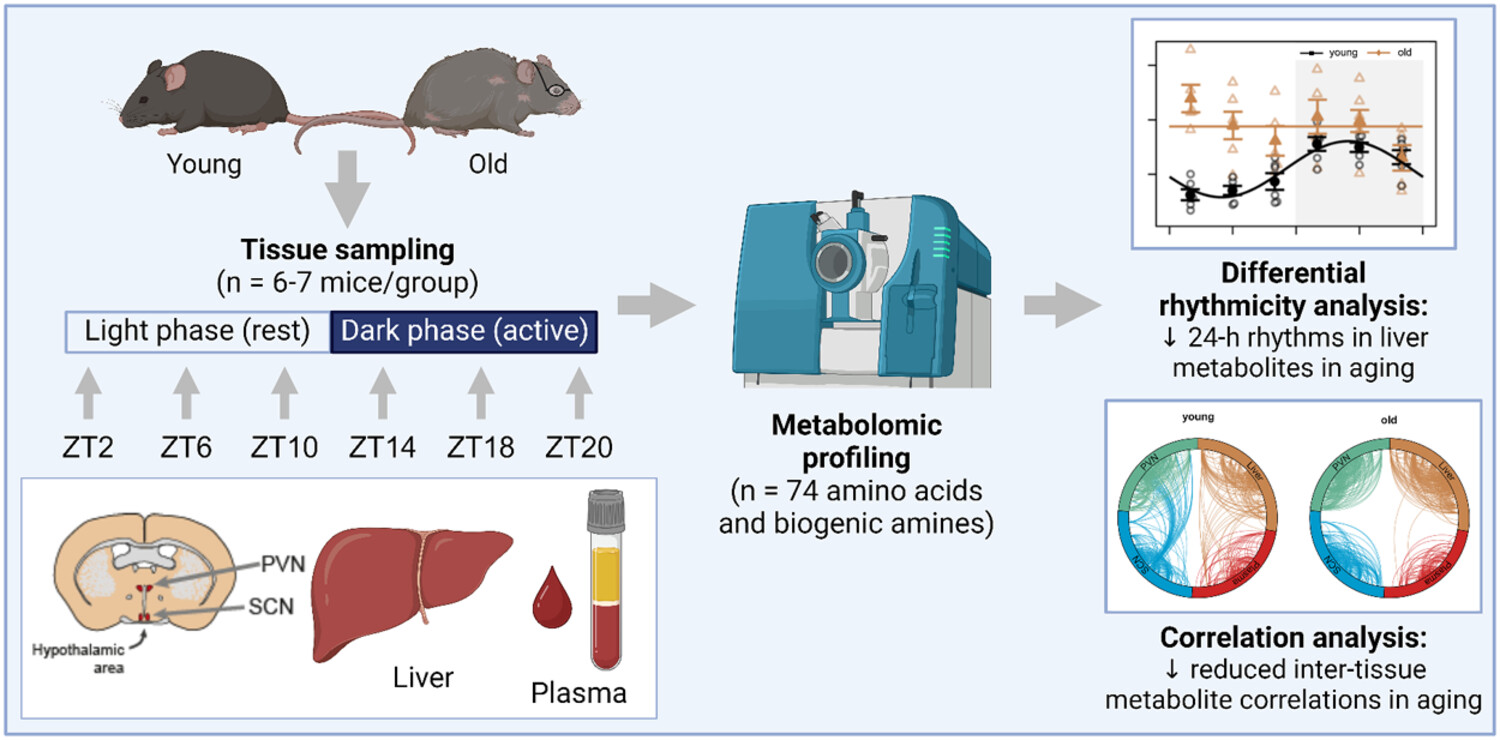
We investigated the impact of ageing on 24-h rhythms in amine metabolites across four tissues in young and old mice. Most profound changes were observed in the liver, in which rhythmicity was lost in 60% of the metabolites in aged mice. Moreover, we found strong correlations in metabolite levels between the liver and plasma and between the SCN and the PVN in young mice, which were almost completely abolished in old mice.
The circadian system: A neglected player in neurodevelopmental disorders
- Pages: 3858-3890
- First Published: 30 May 2024
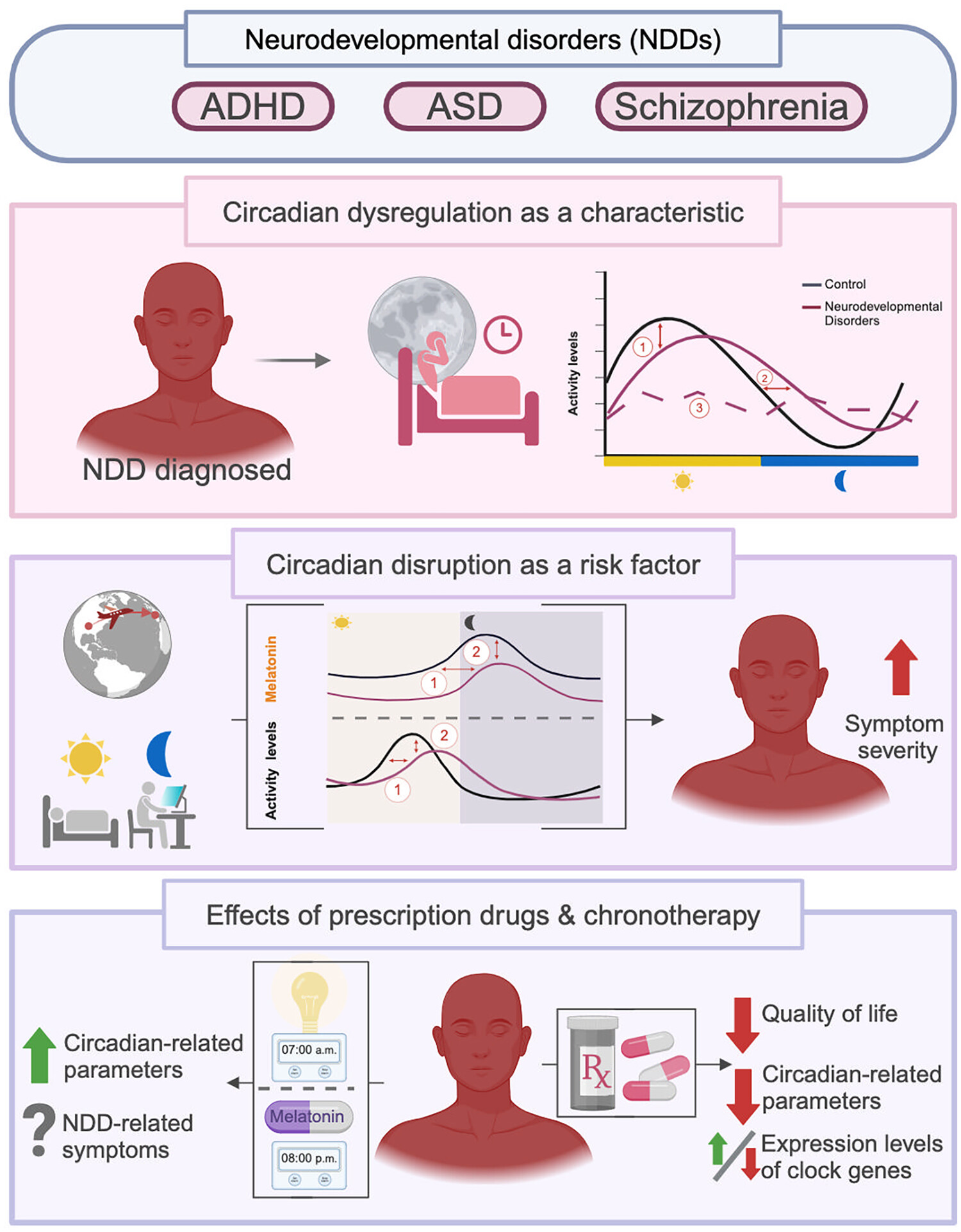
Patients with neurodevelopmental disorders (NDDs) display circadian dysregulation in a heterogeneous manner, including altered daily activity rhythms. Circadian disruption at the environmental and molecular levels is significantly associated with NDD symptom severity. Drugs prescribed to patients with NDDs exert an effect on the circadian system, and chronotherapies, such as bright light therapy, may be leveraged to ameliorate symptoms.
Steven A. Brown and the synchronization of circadian rhythms by body temperature cycles
- Pages: 3891-3900
- First Published: 04 June 2024
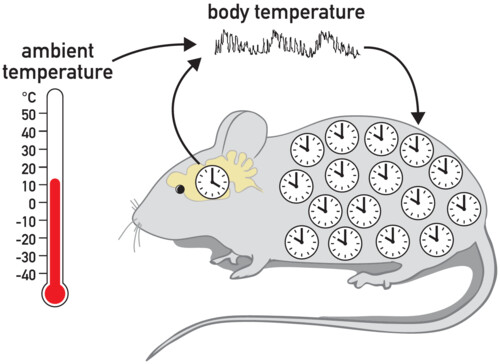
The master pacemaker in the suprachiasmatic nucleus (SCN) and ambient temperature cycles determine the phase and amplitude of body temperature oscillations. The latter, in conjunction with feeding–fasting rhythms and blood-borne signals, participate in the synchronization of circadian clocks in peripheral organs. In mice, circadian clock gene expression in peripheral tissues reaches maximal levels a few hours later than in the SCN.
Aryl hydrocarbon receptor impairs circadian regulation in Alzheimer's disease: Potential impact on glymphatic system dysfunction
- Pages: 3901-3920
- First Published: 25 June 2024
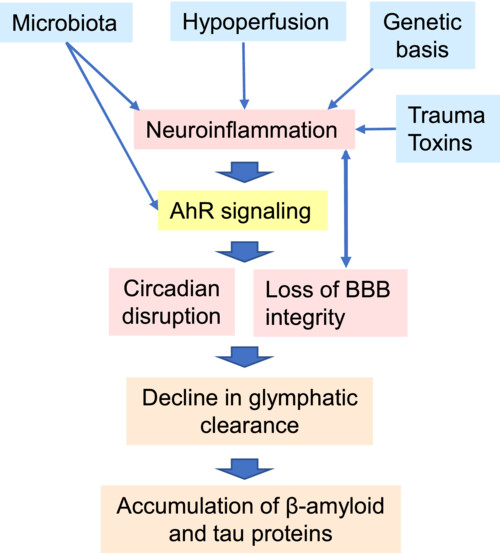
Aryl hydrocarbon receptor (AhR) signalling can disturb the circadian-regulated glymphatic flow and promote AD pathogenesis. Many risk factors for Alzheimer's disease, for example, genetic factors, hypoperfusion, microbiota and many toxins, induce neuroinflammation that stimulates AhR signalling. Subsequently, AhR signalling can impair circadian regulation and disrupt the integrity of the BBB, thus disturbing glymphatic flow and the clearance of β-amyloid and tau proteins from the brain.
Diverse genetic alteration dysregulates neuropeptide and intracellular signalling in the suprachiasmatic nuclei
- Pages: 3921-3945
- First Published: 25 June 2024
Human primary cells can tell body time: Dedicated to Steven A. Brown
- Pages: 3946-3960
- First Published: 01 July 2024
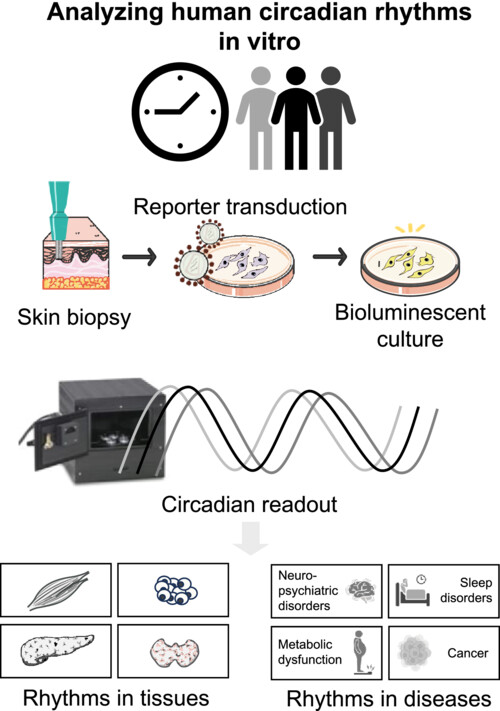
In-depth mechanistic studies of human circadian phenotypes are challenging due to the invasive nature of consecutive sampling across 24 h. In the realm of chronobiology, the work of Steven A. Brown stands out, using skin biopsy-derived fibroblasts as a tool for investigating clock properties. These pivotal findings greatly advanced molecular human clock studies across tissues and pathologies enabling comprehensive non-invasive analyses of inter-individual differences in circadian characteristics.
Effects of non-rapid eye movement sleep on the cortical synaptic expression of GluA1-containing AMPA receptors
- Pages: 3961-3972
- First Published: 08 July 2024
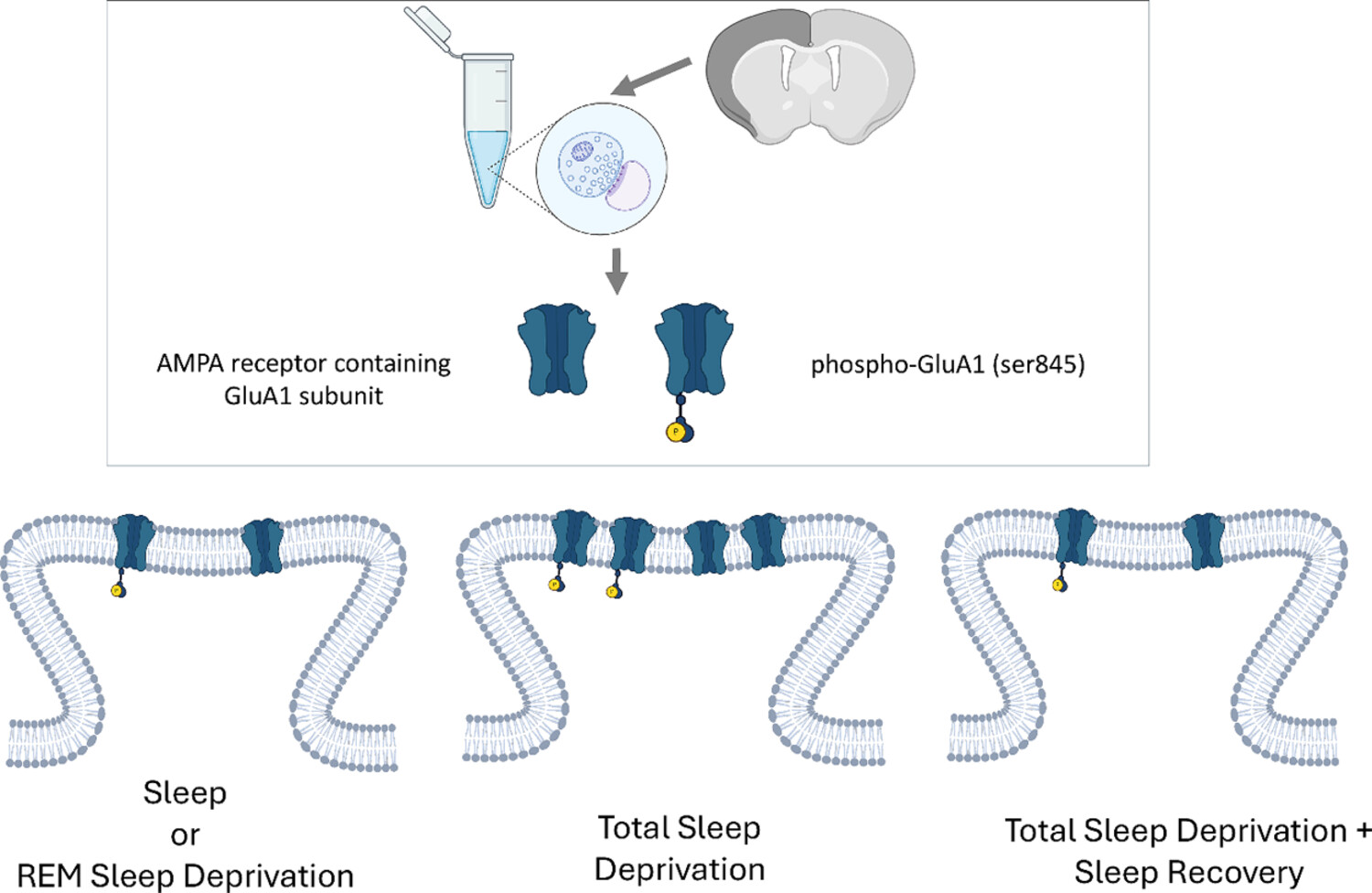
Relative to after sleep deprivation, GluA1 and phospho-GluA1(ser845) expressions are lower after sleep, even when mice have little/no REM sleep. Five hours of recovery sleep following acute sleep deprivation is enough to renormalize the expression of these markers of synaptic strength. The renormalization of GluA1 and phospho-GluA1(ser845) expression crucially relies on NREM sleep and can occur in a few hours of sleep after acute sleep deprivation.
RESEARCH REPORT
Aberrant cortical morphology patterns are associated with cognitive impairment in patients with chronic heart failure
- Pages: 3973-3983
- First Published: 06 May 2024
Effects of rTMS to primary motor cortex and cerebellum on balance control in healthy adults
- Pages: 3984-3994
- First Published: 09 May 2024
Cortical gyrification in women and men and the (missing) link to prenatal androgens
- Pages: 3995-4003
- First Published: 11 May 2024
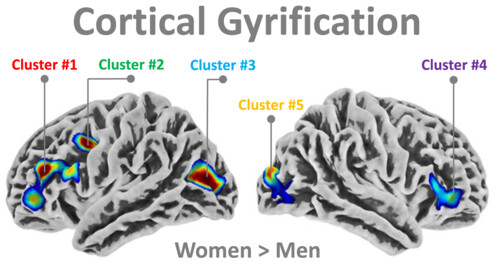
There was a significant main effect of sex in five cortical regions, where gyrification was increased in women compared to men (women > men). These regions were located on the lateral surface of the brain, specifically left rostral middle frontal (Cluster 1), left caudal middle frontal (Cluster 2), left inferior parietal (Cluster 3), right inferior frontal (Cluster 4) and right occipital (Cluster 5). There was no cortical region where gyrification was increased in men compared to women.
Multi-omics in MECP2 duplication syndrome patients and carriers
- Pages: 4004-4018
- First Published: 15 May 2024

MDS and RTT are neurodevelopmental disorders; MDS arises from MECP2 and IRAK1 gene duplication, while RTT results from MECP2 mutations. Using multi-omics analysis on fibroblasts from MDS, carrier mothers, and patients with RTT, we identified distinct dysregulated biological processes and potential biomarker genes, revealing unexpected molecular differences among the cohorts.
The effects of intermittent theta burst stimulation over dorsal premotor cortex on primary motor cortex plasticity in young and older adults
- Pages: 4019-4033
- First Published: 17 May 2024
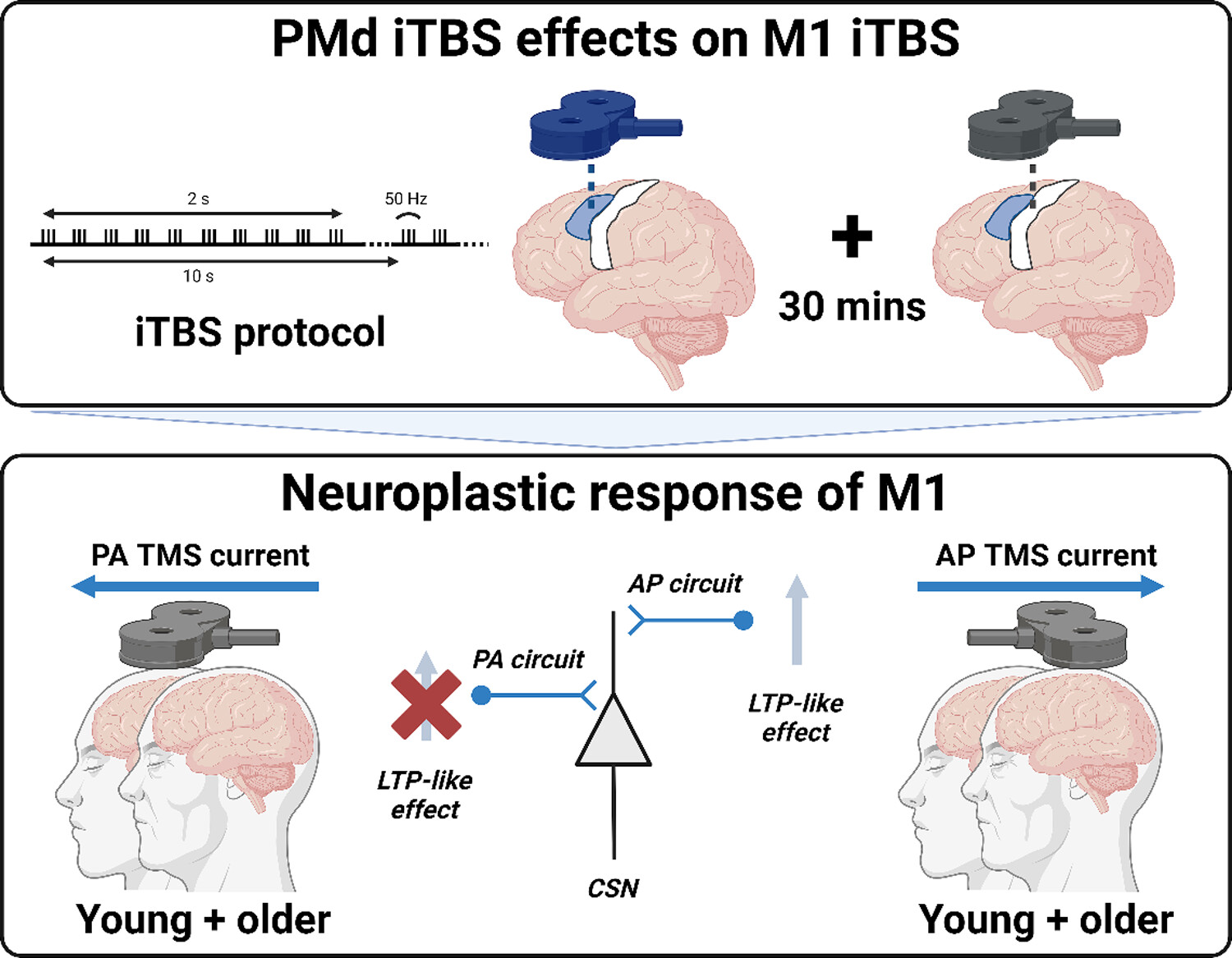
Intermittent theta burst stimulation (iTBS) over dorsal premotor cortex (PMd) as a priming intervention may modify the long-term potentiation-like (LTP-like) effects of iTBS over primary motor cortex (M1; PMd iTBS-M1 iTBS) in young and older adults. Specifically, PMd iTBS may lower the facilitation of M1 circuits recruited with posterior–anterior (PA) current transcranial magnetic stimulation (TMS; but not AP current TMS) to M1 iTBS in both young and older adults.
Alzheimer's disease early screening and staged detection with plasma proteome using machine learning and convolutional neural network
- Pages: 4034-4048
- First Published: 19 May 2024
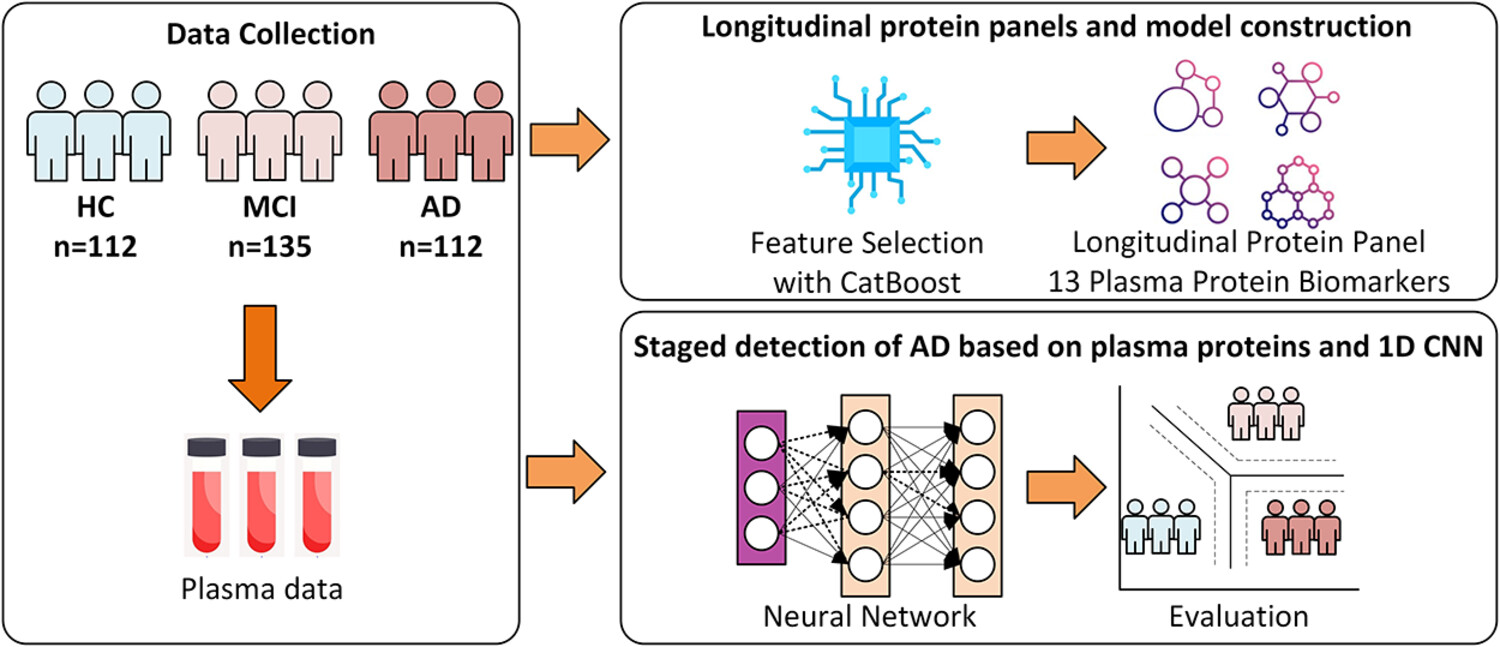
This study combines plasma proteomics with an integrated learning model (CatBoost) to develop a longitudinal proteome that has been identified as a reliable biomarker of AD throughout its progression. Subsequently, a plasma protein-based neural network model was developed for stage-specific diagnosis of AD.
Suppression and omission effects in auditory predictive processing—Two of the same?
- Pages: 4049-4062
- First Published: 19 May 2024
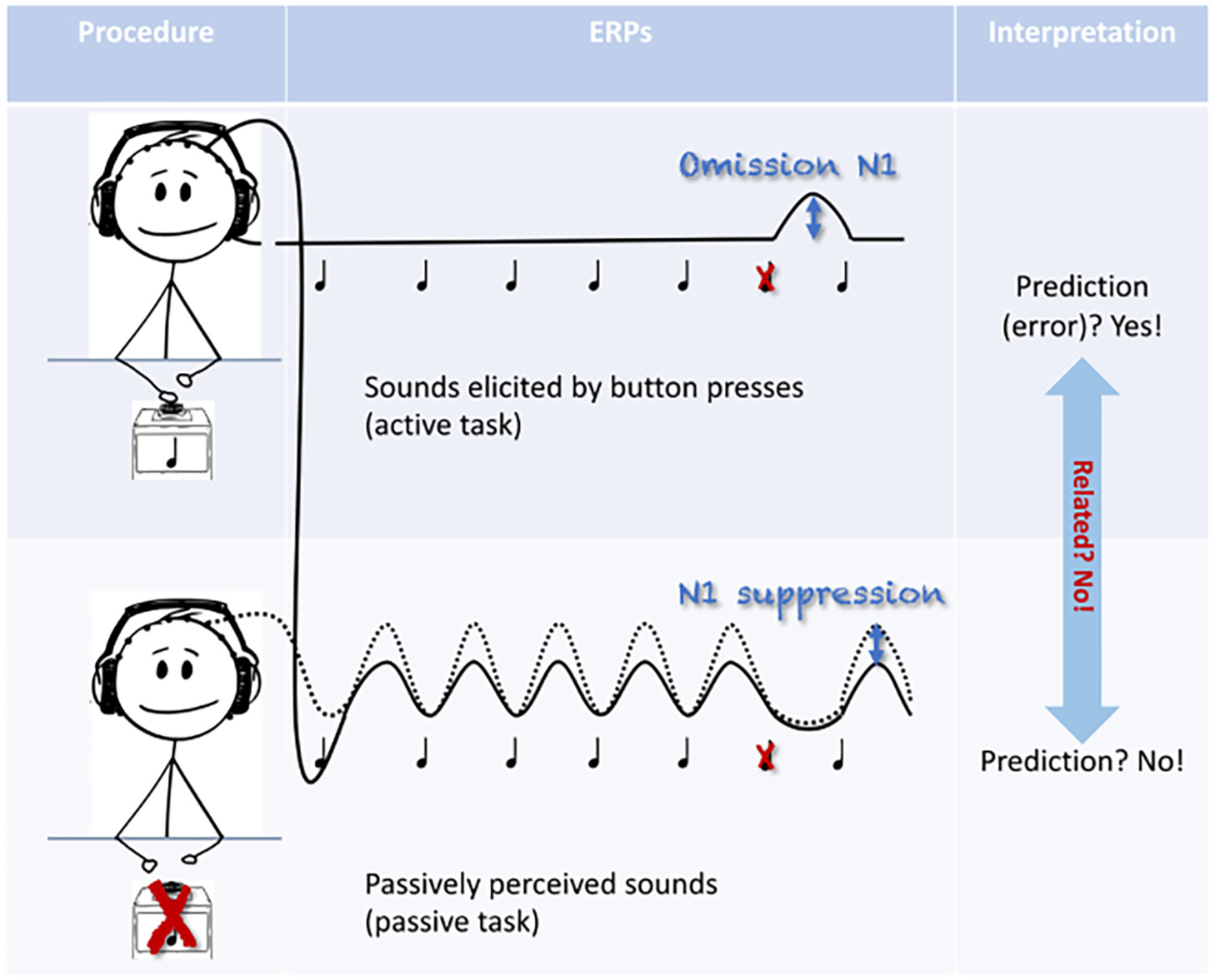
The N1 ERP to sounds is suppressed if sounds are self-generated. If such sounds are unexpectedly omitted, an omission N1 ERP is elicited. Here, we test the hypothesis that omission and suppression effects share a common, predictive mechanism. The omission N1 was sensitive to changes in the predictability of sound occurrence, yet the N1 suppression was not. While omission N1 provides evidence for predictive processing, N1 suppression rather relates to unspecific motor related sensory suppression.
REVIEW ARTICLE
Psychedelic therapy in depression and substance use disorders
- Pages: 4063-4077
- First Published: 21 May 2024
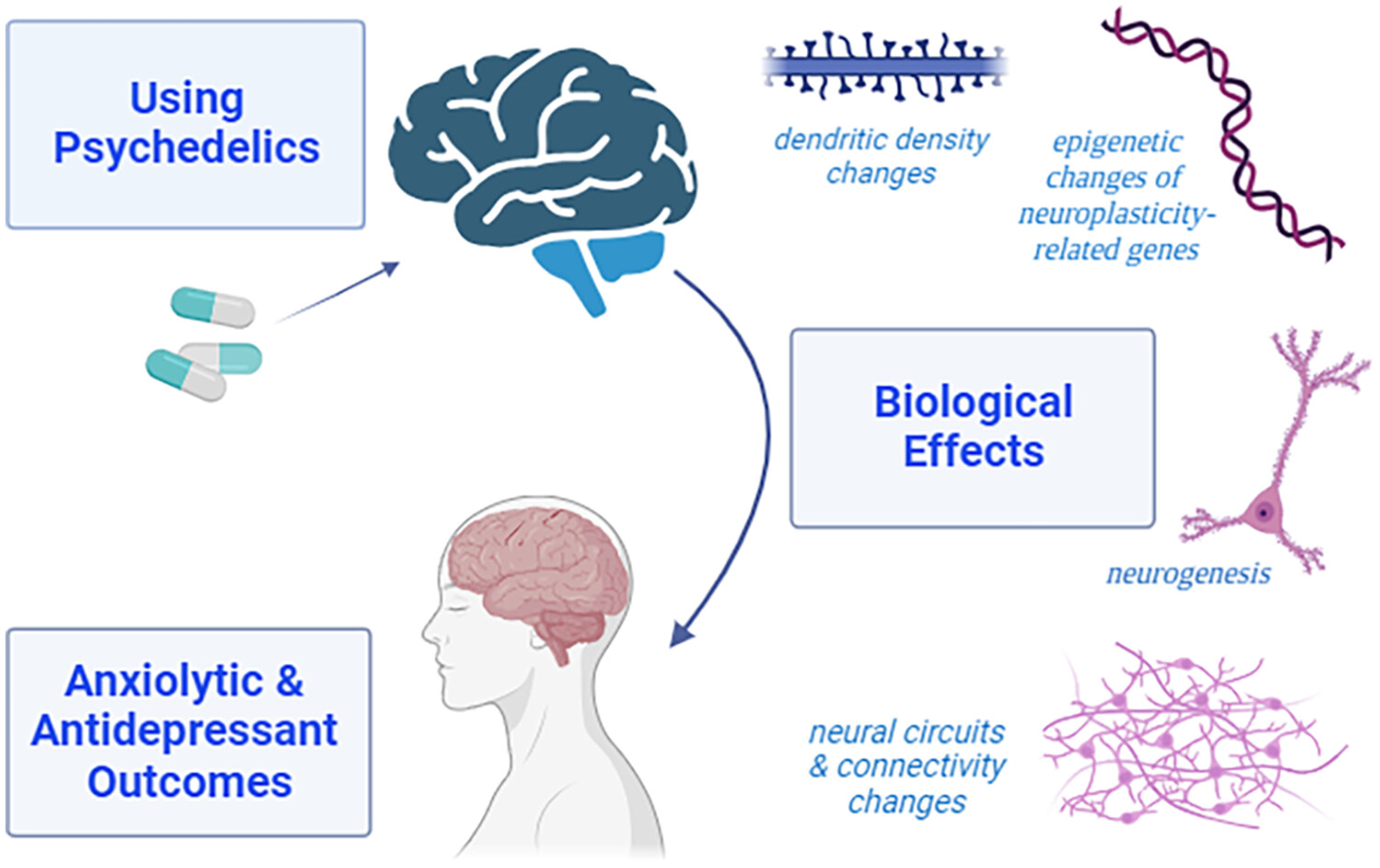
Psychedelics changes in perception through serotonin receptor agonism. Effects on the 5HT2A receptor; neuroplasticity and transcriptomic regulation, as well as specific changes in neural correlates of brain networks. Psychedelic-assisted therapy in disorders such as depression, anxiety and substance use disorders constitutes a strong research area, thus evaluating the clinical use is highly essential (this figure was created with BioRender.com).
RESEARCH REPORT
A premium for positive social interest and attractive voices in the acceptability of unfair offers? An ERP study
- Pages: 4078-4094
- First Published: 22 May 2024
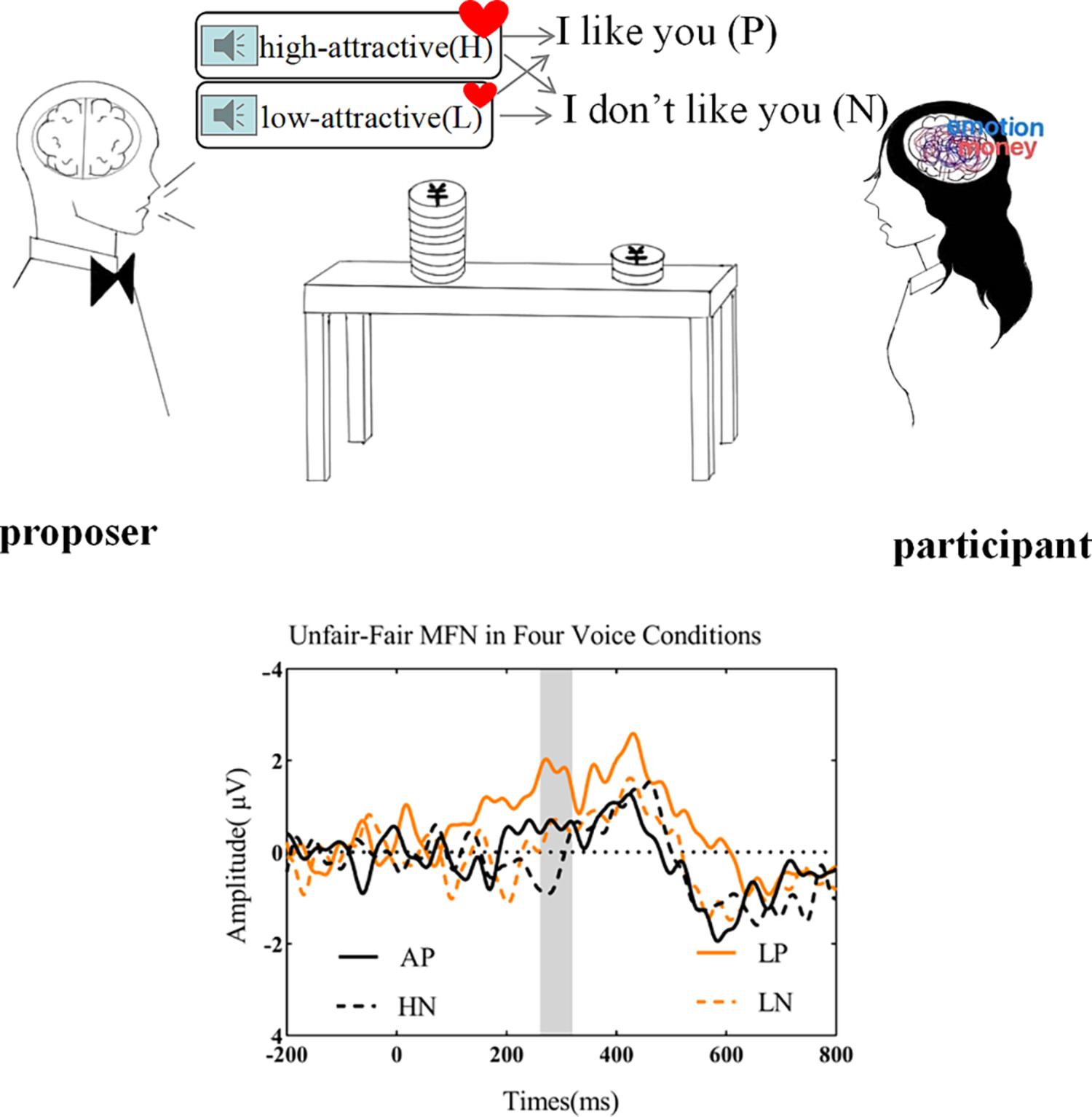
Voice attractiveness and social interest significantly influence social decisions on the fairness of proposals for monetary allocations in the Ultimatum Game: The medial frontal negativity in the ERP was enhanced by unfair proposals but only when the proposer's voice was low (L) rather than high (H) attractive or when the spoken message expressed positive (P) rather than negative (N) social interest.











